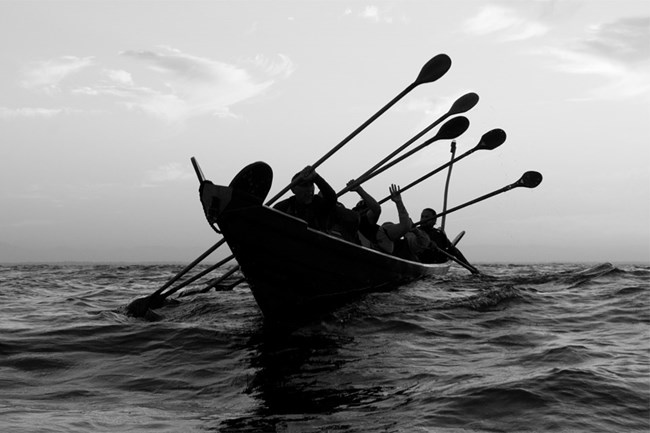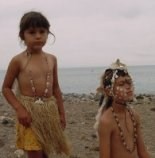
Archeological evidence indicates that there has been a human presence in the northern Channel Islands for thousands of years. Human remains excavated by archeologist Phil Orr from Arlington Springs on Santa Rosa Island in 1959, recently yielded a radio-carbon date of over 13,000 years of age. Archeological sites on The native populations of the Channel Islands were primarily Chumash. The word Michumash, from which the name Chumash is derived, means “makers of shell bead money” and is the term mainland Chumash used to refer to those inhabiting the islands. Traditionally the Chumash people lived in an area extending from San Luis Obispo to Malibu, including the four Northern Channel Islands. Today, with the exception of the Islands, Chumash people live in these territories and areas far beyond. Approximately 148 historic village sites have been identified, including 11 on Santa Cruz Island, eight on Santa Rosa Island, and two on The southernmost park island, Santa Barbara Island, was associated with the Tongva people, also called Gabrieleno, although the Chumash also visited the island. Like the Chumash, they navigated the ocean and traded with their neighbors on the northern islands and the coast. Lacking a steady supply of fresh water, no permanent settlements were ever established on Santa Barbara Island. Tongva/Gabrieleno people lived primarily on the Southern Channel Islands (Santa Barbara, San Nicolas, Santa Catalina and San Clemente islands) and the area in and around Los Angeles. 
Navigation, Trade, and the Tomol The use of the tomol allowed for an elaborate trade network between the islands and mainland, between natives and non-natives, and amongst the island communities themselves. 'Achum, or shell bead money was "minted" by the island Chumash using small discs shaped from olivella shells and drills manufactured from Santa Cruz Island chert. The shell bead money was exchanged with mainland villages for resources and manufactured goods that were otherwise unavailable on the islands. Today, the Barbareño Chumash Tribal Council, in partnership with Channel Islands National Marine Sanctuary and Channel Islands National Park, continues the tradition of the tomol by conducting Channel crossings. Learn more about the Chumash Tomol Crossing.
Missionization Juan Rodriguez Cabrillo was impressed by the friendliness of the Chumash people he encountered. However, diseases introduced by the European explorers began a decline in the native population. As European colonists began to settle along the coast, introducing new economic enterprises, exploiting the marine resources, and establishing Catholic missions, the native food sources were depleted, native economies were altered, and island populations declined even further. By the 1820s, the last of the island Chumash had moved to the mainland, many of them to the Missions at Santa Ynez, San Buenaventura, and Santa Barbara. The mission system depended on the use of native labor to propel industry and the economy. The social organization of Chumash society was restructured, leading to the erosion of previous power bases and further assimilation. When California became part of Mexico, the government secularized the missions, and the Chumash sank into the depths of poverty. By the time of the California gold rush, the Chumash had become marginalized, and little was done to understand or help the remaining population. 
Contemporary Chumash With a current population nearly 5,000 strong, some Chumash people can trace their ancestors to the five islands of Channel Islands National Park. The Chumash reservation in Santa Ynez represents the only federally recognized band, though it is important to note that several other organized Chumash tribal groups exist. The National Park Service invites you to visit Channel Islands National Park, Santa Monica Mountains National Recreation Area, and other local areas to learn more about the Chumash and other Native American cultures. Wondering how the Chumash populated the California coast? Check out the story of Limuw. More information about Chumash history and culture can be found at the following links: |
Last updated: December 4, 2023
